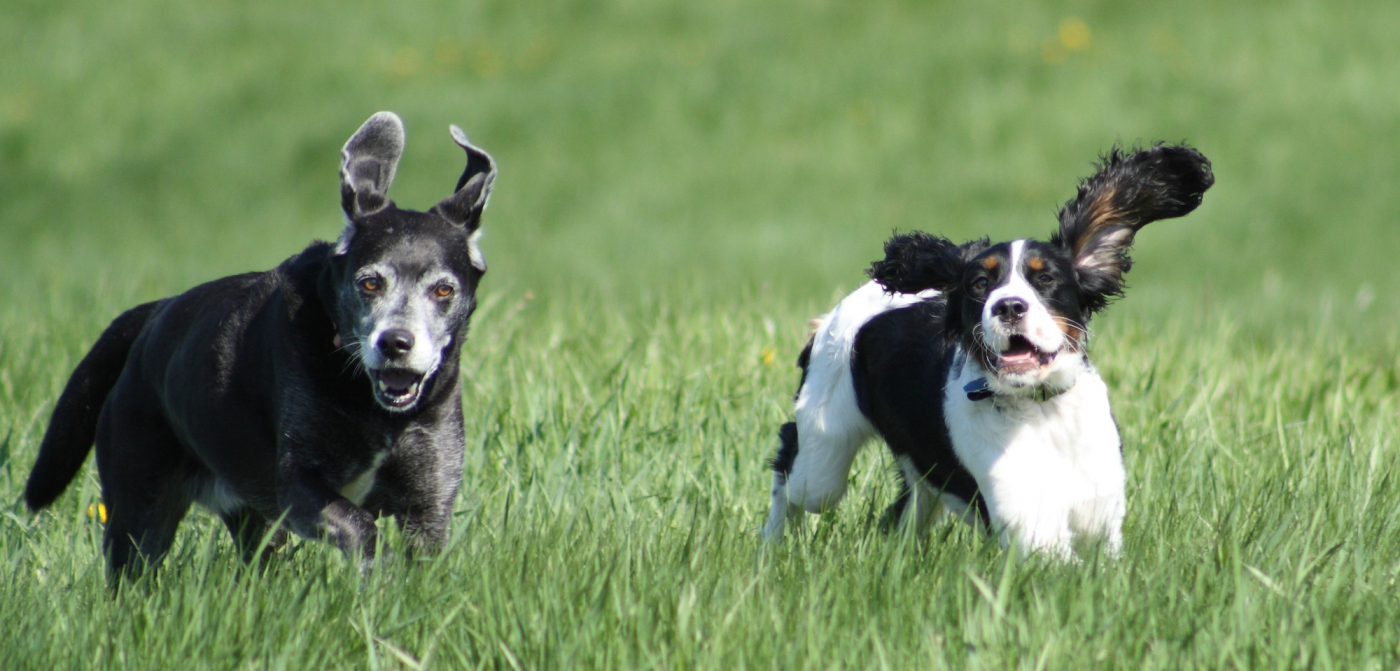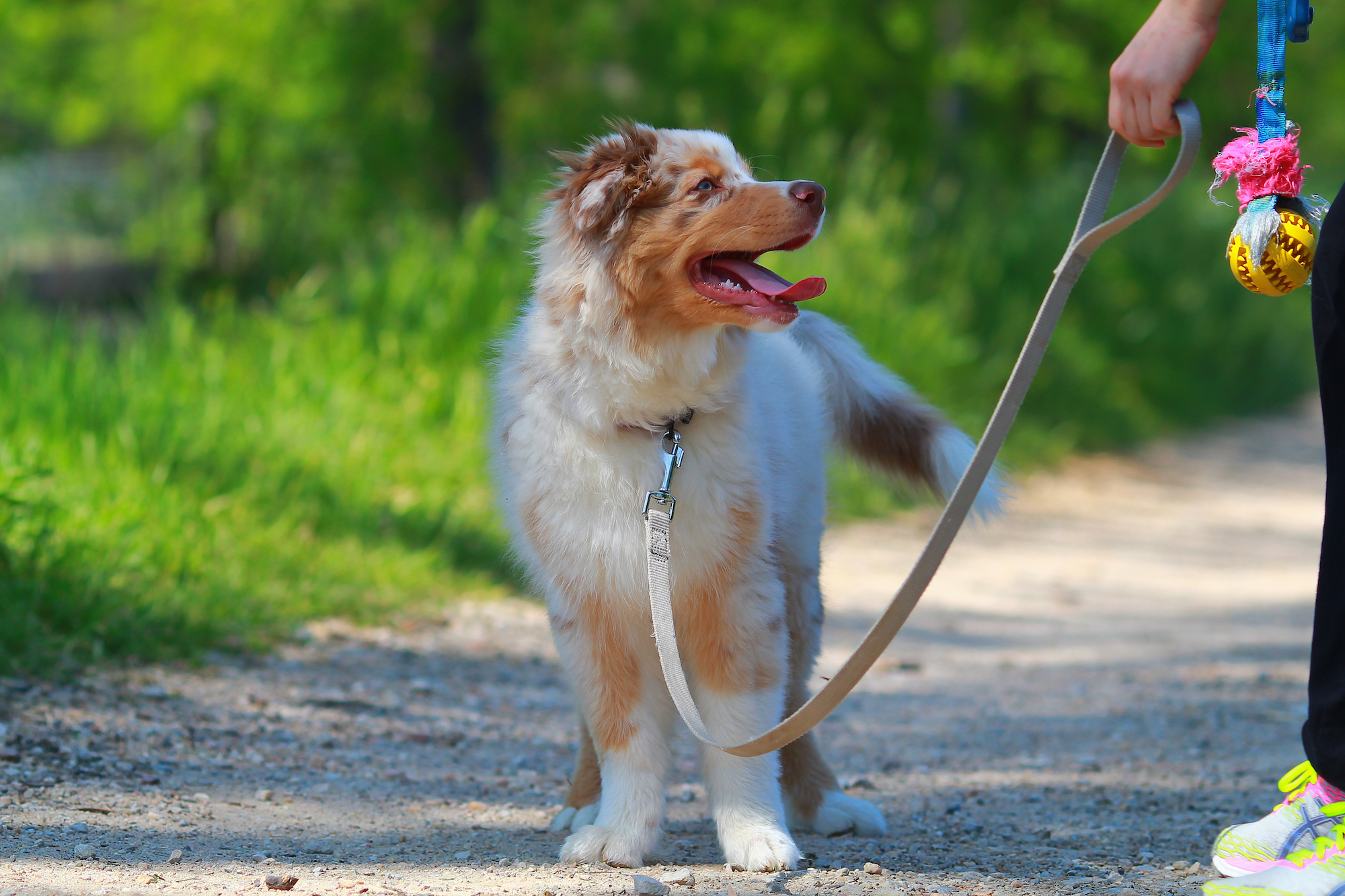No amount of time feels like enough to spend with our dogs, so it’s worth putting in our best effort to help them live as long—and as well—as possible. While nothing we can do is guaranteed to extend their lives, there are many steps we can take to give them the best shot at a healthy, full existence.
There is evidence that the measures below may contribute to your dog’s health span—the period when they are free of illnesses that are seriously detrimental to their day-to-day lives. And some of the steps are simply tried and true ways to set your pup up for a happy, healthy run.
Keep your dog in an ideal body condition
One science-backed step you can take to give your dog the best chance at more years is to keep them in a lean body condition.
Excess weight is a pervasive, devastating health problem among American dogs—according to recent statistics, a majority of companion dogs in the country are overweight or obese. Obesity in dogs is associated with ailments like kidney disease, diabetes, low thyroid-hormone production, heart failure, high blood pressure, arthritis, and cancer. Studies have found that dogs in a lean body condition live up to two-and-a-half years longer than those who are overweight, and experience a better quality of life and later onset of chronic diseases on average.
It’s great news that keeping your dog in an ideal body condition is linked to a longer life, because we have a lot of control over how much, and what, our dogs eat. If you’re precise with your portions and observe your dog closely, this is an area where you can make a real difference in their health. It’s simple to keep track of your dog’s body condition—check our guide for tips, and talk to your veterinarian about what’s healthiest for your dog.
A meal plan pre-portioned to your dog’s specific needs can make it easier to feed your dog just the right amount of food to help them reach and maintain an ideal body condition.
Be diligent about checkups and preventative care
It’s difficult to put a number on how many years your dog might gain if you bring them for regular veterinary exams and make sure to keep their vaccines up to date, but it’s reasonable to think that doing these things could lengthen their life.
A University of Georgia study analyzing causes of death in pet dogs found that the most common reasons dogs died at two years of age or younger were “trauma, congenital disease, and infectious causes.” Many infectious diseases can be prevented by vaccines, so staying up to date on shots could eliminate major risks to dogs of all ages. And every checkup is an opportunity for your veterinarian to look for problems that call for lifestyle changes or treatment.
Train your dog, early and often
Dogs can be badly hurt if they get into fights or run away. The University of Georgia study above listed trauma as among the top causes of death in young dogs. And traumatic events can have negative long-term impacts on dogs’ health even if they are not fatal. A dog who can behave safely—avoiding conflicts and coming when called, for example—will be easier to keep out of harm’s way when there are dangers like traffic or other animals who might fight with them. That’s one of many reasons that it’s crucial to teach your dog and build a strong bond with them. And if you spend more time on enriching, stimulating activities that you and your dog can do together, you’re also likely to have a happier dog.
Protect your dog from dangerous objects and substances
The ASPCA’s Animal Poison Control Center says it fielded calls about more than 400,000 animals in 2021. The center didn’t break those calls down by species, but the sheer volume illustrates that animals frequently ingest things they shouldn’t—and protecting dogs from toxic substances can save their lives. Study up on which human foods can harm dogs, and lock up any hazardous ingredients, medications, and other items so that your dogs can’t get to them. Dogs can also be hurt if they swallow certain objects, which can cause choking or bowel obstructions. If it doesn’t belong in your dog’s mouth, do what you can to keep it away from them.
Know your dog’s background
Different types of dogs are predisposed to different conditions, and may benefit from varied types of enrichment and exercise. Talk to your veterinarian about which diseases and injuries are most common in your dog’s breed—and, if you know who their parents are, find out which illnesses run in their family. IVDD in dachshunds and bloat in Great Danes and Doberman pinschers are just two examples of conditions that are more likely in certain breeds. Armed with information about your own dog’s biggest risks, you can take steps to help them avoid becoming sick or hurt. And, while every dog is different, some knowledge of typical breed tendencies may give you ideas for activities that could interest yours.
Keep your dog’s teeth clean
Dental disease is distressingly common in dogs—it’s estimated that over 80% of dogs over the age of three are afflicted. And the bacteria that causes problems in their teeth and gums can infect other parts of their bodies, sometimes leading to life-threatening conditions—research shows a link between periodontal disease and heart disease in dogs. That’s why it’s a good idea to institute a toothbrushing routine with your pup—with training and patience, most dogs can learn to like it—and to let the vet take a look at their teeth during checkups. Always use a dog-safe toothpaste; the human versions have ingredients that can harm or even kill a dog.
Give your dog an appropriate amount of exercise
Generally speaking, dogs are better off being active. That doesn’t mean an 18-year-old senior Chihuahua should run like a 3-year-old greyhound, but it does mean that you should pay attention to every pup’s need for physical and mental stimulation.
Research shows that exercise can have major benefits to humans’ health as we age—for example, this study in which short walks after meals seemed to improve participants’ control of their blood sugar. And, while we are not dogs, we’re similar enough that scientists are starting to study dogs as they search for ways to keep humans healthier as they grow older.
While diet is the most important factor in helping a dog lose weight, exercise is also a significant part of a complete weight-loss plan—and, because obesity is linked to so many chronic health conditions in dogs, that means exercise is one key way you can boost your dog’s chances of staying healthy longer.
Studies have also suggested that dogs who get enough exercise may also exhibit improved behavior, including less aggression, fear, and separation anxiety. We know that stress harms human health, and that stressed dogs can show physical signs that they’re upset—so if your dog’s exercise routine can make them feel more relaxed and at ease, there’s a good chance it will be a boon for their overall wellbeing.
Consult your vet before embarking on a new or revamped exercise regimen.
Feed your dog real, healthy food
Diet is a big factor in long-term health, for humans and animals. Fresh, lightly cooked, human-grade food can provide real health benefits that can make all your dog’s years better years.
First, feeding a diet that’s made to human-grade standards means you know with greater certainty what you’re putting in the bowl. Non-human-grade kibble need not meet human-grade standards, and can contain “4D” meats—those from diseased, disabled, dying, and dead animals. These, along with other unappetizing ingredients, are permitted in feed-grade food as long as they go through a high-heat process called rendering and turned into “meals” or fats. It can be hard to tell from an ingredient list what’s in the bags, too—research shows that a substantial number of commercial pet food ingredient lists are inaccurate.
The way food is cooked is a big, often-overlooked factor in how many nutrients reach your dog. We cook our fresh food by gently steaming it, a method proven to retain a greater proportion of important nutrients which can help improve dogs’ immune system function. And research shows that fresh, human-grade food is more digestible than many types of extruded kibble, which means that dogs eating it absorb more of the nutrients it contains—and they poop much less than pups who eat kibble. In sum, fresh human-grade food is a way to pack your dog’s diet with more of what’s good for them.












